Curate, connect, and discover
Jupiter - Blog Posts
After five years traveling through space to its destination, our Juno spacecraft will arrive in orbit around Jupiter today, July 4, 2016. This video shows a peek of what the spacecraft saw as it closed in on its destination before instruments were turned off. Watch our noon EDT Pre-Orbit Insertion Briefing on NASA Television for more: https://www.nasa.gov/nasatv or http://youtube.com/nasajpl/live.
Make sure to follow us on Tumblr for your regular dose of space: http://nasa.tumblr.com
Juno: Join the Mission!
Our Juno spacecraft may be millions of miles from Earth, but that doesn’t mean you can’t get involved with the mission and its science. Here are a few ways that you can join in on the fun:
Juno Orbit Insertion

This July 4, our solar-powered Juno spacecraft arrives at Jupiter after an almost five-year journey. In the evening of July 4, the spacecraft will perform a suspenseful orbit insertion maneuver, a 35-minute burn of its main engine, to slow the spacecraft by about 1,212 miles per hour so it can be captured into the gas giant’s orbit. Watch live coverage of these events on NASA Television:
Pre-Orbit Insertion Briefing Monday, July 4 at 12 p.m. EDT
Orbit Insertion Coverage Monday, July 4 at 10:30 p.m. EDT
Join Us On Social Media

Orbit Insertion Coverage Facebook Live Monday, July 4 at 10:30 p.m. EDT
Be sure to also check out and follow Juno coverage on the NASA Snapchat account!
JunoCam

The Juno spacecraft will give us new views of Jupiter’s swirling clouds, courtesy of its color camera called JunoCam. But unlike previous space missions, professional scientists will not be the ones producing the processed views, or even choosing which images to capture. Instead, the public will act as a virtual imaging team, participating in key steps of the process, from identifying features of interest to sharing the finished images online.

After JunoCam data arrives on Earth, members of the public will process the images to create color pictures. Juno scientists will ensure JunoCam returns a few great shots of Jupiter’s polar regions, but the overwhelming majority of the camera’s image targets will be chosen by the public, with the data being processed by them as well. Learn more about JunoCam HERE.
Follow our Juno mission on the web, Facebook, Twitter, YouTube and Tumblr.
Make sure to follow us on Tumblr for your regular dose of space: http://nasa.tumblr.com
Juno Spacecraft: What Do We Hope to Learn?

The Juno spacecraft has been traveling toward its destination since its launch in 2011, and is set to insert Jupiter’s orbit on July 4. Jupiter is by far the largest planet in the solar system. Humans have been studying it for hundreds of years, yet still many basic questions about the gas world remain.

The primary goal of the Juno spacecraft is to reveal the story of the formation and evolution of the planet Jupiter. Understanding the origin and evolution of Jupiter can provide the knowledge needed to help us understand the origin of our solar system and planetary systems around other stars.

Have We Visited Jupiter Before? Yes! In 1995, our Galileo mission (artist illustration above) made the voyage to Jupiter. One of its jobs was to drop a probe into Jupiter’s atmosphere. The data showed us that the composition was different than scientists thought, indicating that our theories of planetary formation were wrong.
What’s Different About This Visit? The Juno spacecraft will, for the first time, see below Jupiter’s dense clover of clouds. [Bonus Fact: This is why the mission was named after the Roman goddess, who was Jupiter’s wife, and who could also see through the clouds.]

Unlocking Jupiter’s Secrets
Specifically, Juno will…
Determine how much water is in Jupiter’s atmosphere, which helps determine which planet formation theory is correct (or if new theories are needed)
Look deep into Jupiter’s atmosphere to measure composition, temperature, cloud motions and other properties
Map Jupiter’s magnetic and gravity fields, revealing the planet’s deep structure
Explore and study Jupiter’s magnetosphere near the planet’s poles, especially the auroras – Jupiter’s northern and southern lights – providing new insights about how the planet’s enormous
Juno will let us take a giant step forward in our understanding of how giant planets form and the role these titans played in putting together the rest of the solar system.
For updates on the Juno mission, follow the spacecraft on Facebook, Twitter, YouTube and Tumblr.
Make sure to follow us on Tumblr for your regular dose of space: http://nasa.tumblr.com
Juno: Exploring Jupiter’s Intense Radiation
Since 2011, our Juno spacecraft has been heading towards Jupiter, where it will study the gas giant’s atmosphere, aurora, gravity and magnetic field. Along the way, Juno has had to deal with the radiation that permeates space.
All of space is filled with particles, and when these particles get moving at high speeds, they’re called radiation. We study space radiation to better protect spacecraft as they travel through space, as well as to understand how this space environment influences planetary evolution. Once at Jupiter, Juno will have a chance to study one of the most intense radiation environments in our solar system.

Near worlds with magnetic fields – like Earth and Jupiter – these fast-moving particles can get trapped inside the magnetic fields, creating donut-shaped swaths of radiation called radiation belts.
Jupiter’s radiation belts – the glowing areas in the animation below – are especially intense, with particles so energetic that they zip up and down the belts at nearly the speed of light.

Earth also has radiation belts, but they aren’t nearly as intense as Jupiter’s – why? First, Jupiter’s magnetic field is much stronger than Earth’s, meaning that it traps and accelerates faster particles.
Second, while both Earth’s and Jupiter’s radiation belts are populated with particles from space, Jupiter also has a second source of particles – its volcanically active moon Io. Io’s volcanoes constantly release plumes of particles that are energized by Jupiter’s magnetic field. These fast particles get trapped in Jupiter’s radiation belts, making the belts that much stronger and more intense.

In addition to studying this vast space environment, Juno engineers had to take this intense radiation into consideration when building the spacecraft. The radiation can cause instruments to degrade, interfere with measurements, and can even give the spacecraft itself an electric charge – not good for something with so many sensitive electronics.
Since we know Jupiter is a harsh radiation environment, we designed Juno with protections in place to keep it safe. Most of Juno’s electronics live inside a half-inch-thick titanium vault, where most of the radiation can’t reach them. We also planned Juno’s orbit to swoop in very close to Jupiter’s surface, underneath the most intense pockets of radiation in Jupiter’s radiation belts.

Juno arrives at Jupiter on July 4th. Throughout its time orbiting the planet, it will send back data on Jupiter’s magnetic field and energetic particles, helping us understand this intense radiation environment better than ever before.
For updates on the Juno mission, follow the spacecraft on Facebook, Twitter, YouTube and Tumblr.
Make sure to follow us on Tumblr for your regular dose of space: http://nasa.tumblr.com
Juno: Inside the Spacecraft

Our Juno spacecraft was carefully designed to meet the tough challenges in flying a mission to Jupiter: weak sunlight, extreme temperatures and deadly radiation. Lets take a closer look at Juno:
It Rotates!

Roughly the size of an NBA basketball court, Juno is a spinning spacecraft. Cartwheeling through space makes the spacecraft’s pointing extremely stable and easy to control. While in orbit at Jupiter, the spinning spacecraft sweeps the fields of view of its instruments through space once for each rotation. At three rotations per minute, the instruments’ fields of view sweep across Jupiter about 400 times in the two hours it takes to fly from pole to pole.
It Uses the Power of the Sun

Jupiter’s orbit is five times farther from the sun than Earth’s, so the giant planet receives 25 times less sunlight than Earth. Juno will be the first solar-powered spacecraft we've designed to operate at such a great distance from the sun. Because of this, the surface area of the solar panels required to generate adequate power is quite large.

Three solar panels extend outward from Juno’s hexagonal body, giving the overall spacecraft a span of about 66 feet. Juno benefits from advances in solar cell design with modern cells that are 50% more efficient and radiation tolerant than silicon cells available for space missions 20 years ago. Luckily, the mission’s power needs are modest, with science instruments requiring full power for only about six out of each 11-day orbit.
It Has a Protective Radiation Vault

Juno will avoid Jupiter’s highest radiation regions by approaching over the north, dropping to an altitude below the planet’s radiation belts, and then exiting over the south. To protect sensitive spacecraft electronics, Juno will carry the first radiation shielded electronics vault, a critical feature for enabling sustained exploration in such a heavy radiation environment.
Juno Science Payload:
Gravity Science and Magnetometers – Will study Jupiter’s deep structure by mapping the planet’s gravity field and magnetic field.

Microwave Radiometer – Will probe Jupiter’s deep atmosphere and measure how much water (and hence oxygen) is there.

JEDI, JADE and Waves – These instruments will work to sample electric fields, plasma waves and particles around Jupiter to determine how the magnetic field is connected to the atmosphere, and especially the auroras (northern and southern lights).
JADE and JEDI

Waves

UVS and JIRAM – Using ultraviolet and infrared cameras, these instruments will take images of the atmosphere and auroras, including chemical fingerprints of the gases present.
UVS

JIRAM

JunoCam – Take spectacular close-up, color images.

Follow our Juno mission on the web, Facebook, Twitter, YouTube and Tumblr.
Make sure to follow us on Tumblr for your regular dose of space: http://nasa.tumblr.com
Secrets lie deep within Jupiter, shrouded in the solar system's strongest magnetic field and most lethal radiation belts. On July 4, 2016, our Juno spacecraft will plunge into uncharted territory, entering orbit around the gas giant and passing closer than any spacecraft before. Juno will see Jupiter for what it really is, but first it must pass the trial of orbit insertion. For more information: http://www.nasa.gov/juno and http://missionjuno.swri.edu.
Make sure to follow us on Tumblr for your regular dose of space: http://nasa.tumblr.com
What is it Like to Visit Jupiter?
Jupiter is the largest planet in our solar system. For some perspective, if it were hollow, more than 1,300 Earths could fit inside of it! The giant planet contains two-thirds of all the planetary mass in the solar system and holds more than dozens of moons in its gravitational grip. But what about a visit to this giant planet?

Let’s be honest…Jupiter is not a nice place to visit. It’s a giant ball of gas and there’s nowhere to land. Any spacecraft – or person – passing through the colorful clouds gets crushed and melted. On Jupiter, the pressure is so strong it squishes gas into liquid. Its atmosphere can crush a metal spaceship like a paper cup.

Jupiter’s stripes and swirls are cold, windy clouds of ammonia and water. Jupiter’s Great Red Spot is a giant storm BIGGER THAN EARTH! This storm has lasted hundreds of years.

Since Jupiter’s atmosphere is made up of mostly hydrogen and helium, it’s poisonous. There’s also dangerous radiation, more than 1,000 times the lethal level for a human.
Scientists think that Jupiter’s core may be a thick, super hot soup…up to 50,000 degrees! Woah!
The Moons

Did you know that Jupiter has its own “mini solar system” of 50 moons? Scientists are most interested in the Galilean satellites – which are the four largest moons discovered by Galileo Galilei in 1610.
Today, Galileo would be astounded to know some of the facts about these moons. The moon Io has active volcanos. Ganymede has its own magnetic field while Europa has a frozen crust with liquid-water underneath making it a tempting place to explore for future missions.

When Juno arrives to Jupiter on July 4, it will bring with it a slew of instruments such as infrared imager/spectrometer and vector magnetometer among the half a dozen other scientific tools in its payload.
Juno will avoid Jupiter's highest radiation regions by approaching over the north, dropping to an altitude below the planet's radiation belts – which are analogous to Earth’s Van Allen belts, but far more deadly – and then exiting over the south. To protect sensitive spacecraft electronics, Juno will carry the first radiation shielded electronics vault, a critical feature for enabling sustained exploration in such a heavy radiation environment.
Follow our Juno mission on the web, Facebook, Twitter, YouTube and Tumblr.
Make sure to follow us on Tumblr for your regular dose of space: http://nasa.tumblr.com
Solar System: Things to Know This Week

For the first time in almost a decade, we're going back to Jupiter. Our Juno spacecraft arrives at the king of planets on the fourth of July. From a unique polar orbit, Juno will repeatedly dive between the planet and its intense belts of charged particle radiation. Juno's primary goal is to improve our understanding of Jupiter's formation and evolution, which will help us understand the history of our own solar system and provide new insight into how other planetary systems form.
In anticipation, here are a few things you need to know about the Juno mission and the mysterious world it will explore:
1. This is the Big One

The most massive planet in our solar system, with dozens of moons and an enormous magnetic field, Jupiter rules over a kind of miniature solar system.
2. Origin Story

Why study Jupiter in the first place? How does the planet fit into the solar system as a whole? What is it hiding? How will Juno unlock its secrets? A series of brief videos tells the stories of Jupiter and Juno. Watch them HERE.
3. Eyes on Juno
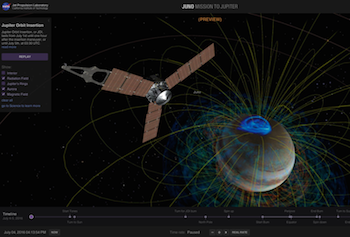
If you really want a hands-on understanding of Juno's flight through the Jupiter system, there's no better tool than the "Eyes on Juno" online simulation. It uses data from the mission to let you realistically see and interact with the spacecraft and its trajectory—in 3D and across both time and space.
4. You’re on JunoCam!

Did you know that you don't have to work for NASA to contribute to the Juno mission? Amateur astronomers and space enthusiasts everywhere are invited to help with JunoCam, the mission's color camera. You can upload your own images of Jupiter, comment on others' images, and vote on which pictures JunoCam will take when it reaches the Jovian system.
5. Ride Along
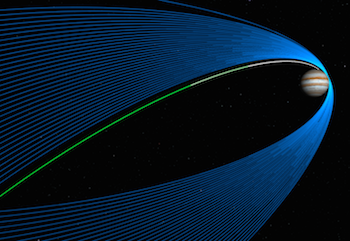
It's easy to follow events from the Juno mission as they unfold. Here are several ways to follow along online:
Want to learn more? Read our full list of the 10 things to know this week about the solar system HERE.
Make sure to follow us on Tumblr for your regular dose of space: http://nasa.tumblr.com
Solar System: Things to Know This Week
Our solar system is huge, let us break it down for you. Here are a few things to know this week:
1. Juno Eyes on Jupiter

After a journey of more than five years, the Juno spacecraft is ready for its detailed look at Jupiter—arrival date: July 4. Using Eyes on the Solar System and data from the Juno flight team, you can take a virtual ride onboard the spacecraft in the "Eyes on Juno" simulation.
2. Taking a Spacecraft for a Spin
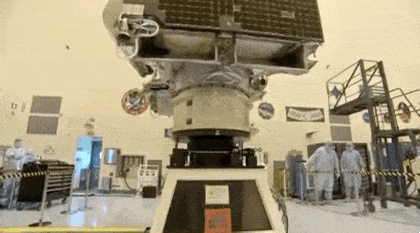
Preparations for the launch of the OSIRIS-REx asteroid mission are spinning up, literally. Here, the spacecraft can be seen rotating on a spin table during a weight and center of gravity verification test at our Kennedy Space Center. Liftoff is scheduled for Sept. 8. This spacecraft will travel to a near-Earth asteroid called Bennu and bring a small sample back to Earth for study.
3. Long-Range (Or at Least Long-Distance) Weather Report
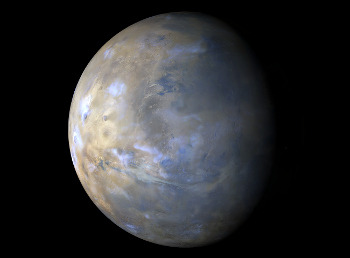
Our Mars Reconnaissance Orbiter acquires a global view of the red planet and its weather every day. Last week, dust storms continued along the south polar ice cap edge. Northern portions of Sirenum, Solis, and Noachis also experienced some local dust-lifting activity. A large dust storm propagated eastward over the plains of Arcadia at the beginning of the week, but subsided just a few days later over Acidalia.
4. Hello from the Dark Side

The New Horizons spacecraft took this stunning image of Pluto only a few minutes after closest approach in July 2015, with the sun on the other side of Pluto. Sunlight filters through Pluto's complex atmospheric haze layers. Looking back at Pluto with images like this gives New Horizons scientists information about Pluto's hazes and surface properties that they can't get from images taken on approach.
5. A Titanic Encounter
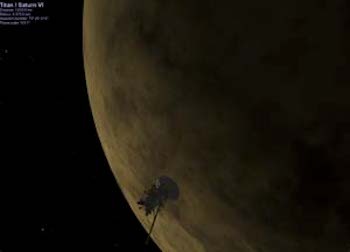
On June 7, our Cassini orbiter will fly very close by Saturn's giant, haze-shrouded moon Titan. Among the targets of its observations will be the edge of the vortex that swirls in Titan's thick atmosphere near its south pole.
Want to learn more? Read our full list of the 10 things to know this week about the solar system HERE.
Make sure to follow us on Tumblr for your regular dose of space: http://nasa.tumblr.com
Solar System: Things to Know This Week
Our solar system is huge, so let us break it down for you. Here are a few things you should know this week:
1. Science at the Edge

As the New Horizons spacecraft speeds away at more than 31,000 miles per hour (14 km/s) it continues to explore the Kuiper Belt, the region of icy bodies beyond Neptune. New Horizons has now twice observed 1994 JR1, a 90-mile-wide object orbiting more than 3 billion miles from the sun.
2. A Spaceship, Refined

This artist’s rendering shows our Europa mission spacecraft, which is being developed for a launch sometime in the 2020s. The mission will place a spacecraft in orbit around Jupiter to explore the giant planet’s moon Europa. This updated concept image shows tow large solar arrays extending from the sides of the spacecraft, to which the mission’s ice-penetrating radar antennas are attached. A saucer-shaped high-gain antenna is also side mounted with a magnetometer boom placed next to it. Find out more about the spacecraft HERE.
3. Sojourn at Saturn

The Cassini spacecraft is hard at work this week, orbiting Saturn to study the planet and its rings. The recent pictures are spectacular, take a look at them HERE.
4. Talking Juno
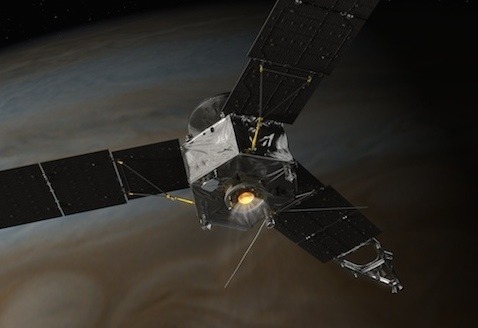
Our Juno mission arrives at Jupiter on July 4, and that presents a unique opportunity for educators, science communicators and anyone interested in space exploration. We are providing a growing set of Juno-related information resources. Take a look at them HERE.
5. Now THAT’S a Long Distance Call
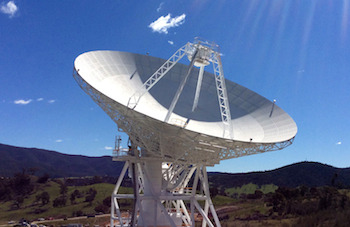
How do explorers on Earth talk to astronauts and robotic spacecraft flung across the far reaches of space? They use the remarkable technology deployed by our Space Communications and Navigation (SCaN) Program Office. This month, SCaN is celebrating its 10th anniversary of managing the ultimate network. Find out how it works HERE.
Want to learn more? Read our full list of the 10 things to know this week about the solar system HERE.
Make sure to follow us on Tumblr for your regular dose of space: http://nasa.tumblr.com
Solar System: Things to Know This Week
In addition to the Mercury transit of the sun today, there are a few other things you should know about our solar system this week:
1. Mars, Ready for its Close-Up
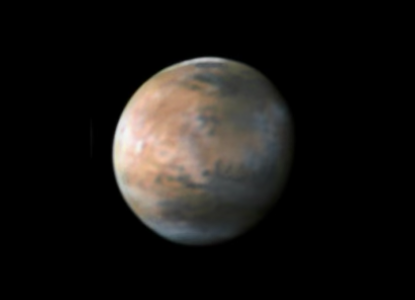
Mars will soon be closer to Earth than it has been for 11 years, presenting a great opportunity for backyard sky watchers.
2. Fire and Ice

Our spacecraft have an even closer view of Mars, and that fact regularly leads to some intriguing discoveries. The latest: volcanoes may have erupted beneath an ice sheet there billions of years ago. The above image is a mineral map of part of the Martian surface.
3. Icy Hydra

Meanwhile, our New Horizons spacecraft has sent home the first compositional data about Pluto's four small moons. The new data show the surface of Hydra is dominated by nearly pristine water ice--confirming hints that scientists picked up in images showing Hydra's highly reflective surface.
4. Ceres, Ever Sharper

The mission director for our Dawn mission writes, "Ceres, which only last year was hardly more than a fuzzy blob against the stars, is now a richly detailed world, and our portrait grows more elaborate every day."
5. Join us at Jupiter

Our Juno mission arrives at the giant planet on Jul. 4. Meanwhile, all amateur astronomers are invited to take part in a worldwide effort to identify potential observations for the spacecraft to make once it's in orbit. Find out how to join HERE.
Want to learn more? Read our full list of the 10 things to know this week about the solar system HERE.
Make sure to follow us on Tumblr for your regular dose of space: http://nasa.tumblr.com
Solar System: Things to Know This Week
Our solar system is huge, so let us break it down for you. Here are five things you need to know this week:
1. The Lure of the Rings

Scientists and stargazers alike can’t resist the call of Saturn’s rings, or of its moon Titan. Both have been under close scrutiny by the Cassini spacecraft lately, and there are striking new pictures to prove it. Check out the latest images HERE.
2. A New Moon Rises

The Lunar Reconnaissance Orbiter has captured dramatic landscapes on the moon for more than six years. “A New Moon Rises,” now on display at the Smithsonian National Air and Space Museum in Washington, DC, showcases those images ranging from Apollo landing sites to mountains that rise out of the darkness of the lunar poles. See an online version of the exhibit HERE.
3. Around the (Giant) World in (Just Under) 88 Days

The Juno mission is closing in on Jupiter. On July 4, the spacecraft enters orbit around the king of planets. Learn more about Juno HERE.
4. Spiders and Volcanoes and Glaciers, Oh My

The more data that New Horizons spacecraft sends down about Pluto and its moons, the more there is to fascinate explorers, from spider-shaped canyons to signs of glacial flow. Take a peek at the new finds on Pluto HERE.
5. World of Wonders

Hexagonal craters, mysterious mountains, eye-catching bright patches — the dwarf planet Ceres is proving to be an intriguing place. The Dawn mission is looking for clues to how it works. See the latest from Ceres HERE.
Want to learn more? Read our full list of the 10 things to know this week about the solar system HERE.
Make sure to follow us on Tumblr for your regular dose of space: http://nasa.tumblr.com
What’s Up for March 2016?
In March, Jupiter, it’s moons and moon shadows will all be visible in the sky. Find out when and where to look up:

Jupiter dominates the evening sky this month, rising at sunset and setting at dawn. On March 8, Jupiter reaches what is called “opposition”. Imagine that Jupiter and the sun are at opposite ends of a straight line, with the Earth in between. This brings Jupiter its closest to Earth, so it shines brighter and appears larger in telescopes.

On the nights of March 14 – 15, March 21 – 22 and March 29, two of Jupiter’s moons will cross the planet’s disk.

When the planet is at opposition and the sun shines on Jupiter’s moons, we can see the moon’s shadow crossing the planet. There are actually 11 of these double shadow transits in March!

The next six months will be awesome times for you to image Jupiter when it’s highest in the sky; near midnight now, and a little earlier each night through the late summer.
Even through the smallest telescopes or binoculars, you should be able to see the two prominent belts on each side of Jupiter’s equator made up of the four Galilean moons: Io, Europa Ganymede and Calisto. If you have a good enough view, you may even see Jupiter’s Red Spot!

Our Juno spacecraft will arrive at Jupiter on July 4th of this year and will go into orbit around the giant planet. Right now, the Juno mission science team is actively seeking amateur and professional images of the planet. These images are uploaded to a Juno website, and the public is invited to discuss points of interest in Jupiter’s atmosphere.

Locations will later be voted on and the favorites will be targets for JunoCam, the spacecraft’s imaging camera. Once JunoCam has taken the images, they’ll be posted online. Imaging participants can then process these raw mission images and re-upload them for others to view.

Make sure to follow us on Tumblr for your regular dose of space: http://nasa.tumblr.com
Travel Posters of Fantastic Excursions
What would the future look like if people were regularly visiting to other planets and moons? These travel posters give a glimpse into that imaginative future. Take a look and choose your destination:
The Grand Tour

Our Voyager mission took advantage of a once-every-175-year alignment of the outer planets for a grand tour of the solar system. The twin spacecraft revealed details about Jupiter, Saturn, Uranus and Neptune – using each planet’s gravity to send them on to the next destination.
Mars

Our Mars Exploration Program seeks to understand whether Mars was, is, or can be a habitable world. This poster imagines a future day when we have achieved our vision of human exploration of the Red Planet and takes a nostalgic look back at the great imagined milestones of Mars exploration that will someday be celebrated as “historic sites.”
Earth

There’s no place like home. Warm, wet and with an atmosphere that’s just right, Earth is the only place we know of with life – and lots of it. Our Earth science missions monitor our home planet and how it’s changing so it can continue to provide a safe haven as we reach deeper into the cosmos.
Venus

The rare science opportunity of planetary transits has long inspired bold voyages to exotic vantage points – journeys such as James Cook’s trek to the South Pacific to watch Venus and Mercury cross the face of the sun in 1769. Spacecraft now allow us the luxury to study these cosmic crossings at times of our choosing from unique locales across our solar system.
Ceres

Ceres is the closest dwarf planet to the sun. It is the largest object in the main asteroid belt between Mars and Jupiter, with an equatorial diameter of about 965 kilometers. After being studied with telescopes for more than two centuries, Ceres became the first dwarf planet to be explored by a spacecraft, when our Dawn probe arrived in orbit in March 2015. Dawn’s ongoing detailed observations are revealing intriguing insights into the nature of this mysterious world of ice and rock.
Jupiter

The Jovian cloudscape boasts the most spectacular light show in the solar system, with northern and southern lights to dazzle even the most jaded space traveler. Jupiter’s auroras are hundreds of times more powerful than Earth’s, and they form a glowing ring around each pole that’s bigger than our home planet.
Enceladus

The discovery of Enceladus’ icy jets and their role in creating Saturn’s E-ring is one of the top findings of the Cassini mission to Saturn. Further Cassini discoveries revealed strong evidence of a global ocean and the first signs of potential hydrothermal activity beyond Earth – making this tiny Saturnian moon one of the leading locations in the search for possible life beyond Earth.
Titan

Frigid and alien, yet similar to our own planet billions of years ago, Saturn’s largest moon, Titan has a thick atmosphere, organic-rich chemistry and surface shaped by rivers and lakes of liquid ethane and methane. Our Cassini orbiter was designed to peer through Titan’s perpetual haze and unravel the mysteries of this planet-like moon.
Europa

Astonishing geology and the potential to host the conditions for simple life making Jupiter’s moon Europa a fascinating destination for future exploration. Beneath its icy surface, Europa is believed to conceal a global ocean of salty liquid water twice the volume of Earth’s oceans. Tugging and flexing from Jupiter’s gravity generates enough heat to keep the ocean from freezing.
You can download free poster size images of these thumbnails here: http://www.jpl.nasa.gov/visions-of-the-future/
Make sure to follow us on Tumblr for your regular dose of space: http://nasa.tumblr.com
Solar System: 5 Things To Know This Week
Our solar system is huge, so let us break it down for you. Here are 5 things you should know this week:
1. From Pluto, with Love

Last Valentine’s Day, no one had even seen Pluto’s most famous feature, the heart-shaped Sputnik Planum. These days, the New Horizons spacecraft is sending more and more pictures back to Earth from its Pluto flyby last July. We received new ones almost on a weekly basis. For the latest love from the outer solar system, go HERE.
2. Saturn’s Rings: More (and Less) than Meets the Eye

The Cassini spacecraft is executing a series of maneuvers to raise its orbit above the plane of Saturn’s famous rings. This will offer some breathtaking views that you won’t want to miss. Meanwhile, Cassini scientists are learning surprising things, such as the fact that the most opaque sections of the rings are not necessarily the thickest.
3. Stay on Target

The Juno spacecraft recently completed a course correction maneuver to fine-tune its approach to Jupiter. After years of flight and millions of miles crossed, arrival time is now set to the minute: July 4th at 11:18 p.m. EST. See why we’re going to jupiter HERE.
4. The Many Lives of “Planet X”

The announcement of a potential new planet beyond Neptune creates an opportunity to look back at the ongoing search for new worlds in the unmapped reaches of our own solar system. Review what we’ve found so far, and what else might be out there HERE.
5. Answering the Call of Europa

There are a few places more intriguing that Jupiter’s icy moon, Europa, home to an underground ocean with all the ingredients necessary for potential life. We’re undertaking a new mission to investigate, and the project’s top manager and scientist will be giving a live lecture to detail their plans. Join Barry Goldstein and Bob Pappalardo on Feb. 11 at 10 p.m. EST for a live lecture series on Ustream.
Want to learn more? Read our full list of the 10 things to know this week HERE.
Make sure to follow us on Tumblr for your regular dose of space: http://nasa.tumblr.com
Solar System: 5 Things To Know This Week

This month you can catch a rare sight in the pre-dawn sky: five planets at once! If you look to the south (or to the north if you’re in the southern hemisphere) between about 5:30 and 6 a.m. local time you’ll see Mercury, Venus, Saturn, Mars and Jupiter lined up like jewels on a necklace. They’re beautiful in the sky, and even more fascinating when you look closely.
This week we’re taking a tour of the planets with recent information about each:
1. Artistic License

Craters on Mercury are named for writers and artists of all kinds. There are Tolstoy, Thoreau and Tolkien craters, for example, as well as those that bear the names of the Brontës, photographer Dorothea Lange and dancer Margot Fonteyn. See the complete roster of crater names HERE.
2. Lifting the Veil of Venus

A thick covering of clouds made Venus a mystery for most of human history. In recent decades, though, a fleet of robotic spacecraft has helped us peer past the veil and learn more about this world that is so like the Earth in some ways — and in some ways it’s near opposite.
3. Curious?

Have you ever wanted to drive the Mars Curiosity rover? You can take the controls using our Experience Curiosity simulation. Command a virtual rover as you explore the terrain in Gale Crater, all using real data and images from Mars. Try it out HERE.
4. Now That’s a Super Storm

Winter weather often makes headlines on Earth — but on Jupiter there’s a storm large enough to swallow our entire planet several times over. It’s been raging for at least three hundred years! Learn about the Great Red Spot HERE.
5. Ring Watcher

This week, the Cassini spacecraft will be making high-resolution observations of Saturn’s entrancing rings. This is a simulated look at Saturn, along with actual photos of the rings from the Cassini mission.
Want to learn more? Read our full list of the 10 things to know this week about the solar system HERE.
Make sure to follow us on Tumblr for your regular dose of space: http://nasa.tumblr.com
Solar System: 5 Things To Know This Week
Our solar system is huge, so let us break it down for you. Here are 5 things to know this week:
1. You Call the Shots

This July, when the Juno mission arrives at Jupiter, it will eye the massive planet with JunoCam. What adds extra interest to this mission is that the public is invited to help Juno scientists choose which images JunoCam will take. Now is the time to get involved.
2. Dawn Delivers

We've seen several images now from the Dawn spacecraft's new, close orbit around Ceres—and they don't disappoint. Exquisitely detailed photos of the dwarf planet reveal craters, cliffs, fractures, canyons and bright spots in many locations. "Everywhere we look in these new low-altitude observations, we see amazing landforms that speak to the unique character of this most amazing world," said the mission's principal investigator.
3. Remembering the Visit to a Sideways World

Jan. 24 is the 30th anniversary of Voyager 2's Uranus flyby. The seventh planet is notable for the extreme tilt of its axis, its lacy ring system and its large family of moons—10 of which were discovered thanks to Voyager's close encounter. In fact, we learned much of what we know about the Uranian system during those few days in 1986.
4. A Decade in the Deep

The New Horizons spacecraft left Earth 10 years ago this week. Its long voyage into deep space is, even now, transforming our understanding of the outer solar system. New data and pictures from the Pluto flyby are still streaming down from the spacecraft. Pending the approval of an extended mission, New Horizons is en route to a 2019 rendezvous with a small, unexplored world in the distant Kuiper Belt.
5. Power at a Distance

Space exploration helped drive the development of practical solar cells, and now solar power has gone farther than ever before. Last week, NASA's Juno spacecraft broke the record for the most distant solar-powered craft when it passed a distance of 493 million miles (793 million kilometers) from the sun. The four-ton Juno spacecraft draws energy from three 30-foot-long (9-meter) solar arrays festooned with 18,698 individual cells.
Want to learn more? Read our full list of the 10 things to know this week about the solar system HERE.
Make sure to follow us on Tumblr for your regular dose of space: http://nasa.tumblr.com
What’s Up for December?

View Mars right now, and prepare for 2016, the best Mars viewing year since 2005! Last month early risers watched small, reddish Mars dance with brighter Jupiter and Venus just before sunrise.

This month Mars rises earlier-by about 2 a.m. local time. Its reddish color is unmistakable, even without a telescope. It's easy to see below the Moon and Jupiter on December 4. You won't see many features this month, because the planet is almost 10 times smaller than nearby Jupiter appears and 350 times smaller than the Moon appears to us on Earth.

You should also be able to see Mars' north polar region this month, because it's currently tilted towards Earth.

You'll be amazed at the changes you'll see during 2016. January through December are all prime Mars observing months. Between January and May next year, Mars triples in apparent diameter as its orbit around the sun brings it closer to Earth. You'll even be able to see the areas on Mars where NASA's Mars landers are located.

By October, Mars shrinks in apparent size to less than half its May diameter as it speeds away from Earth. Mars shrinks even further from October through December, returning to the same size we saw in January 2016 by year's end.
So put Mars viewing on your calendar for 2016. You won't see Mars this size again until 2018, when Mars will put on an even better show.

Make sure to follow us on Tumblr for your regular dose of space: http://nasa.tumblr.com
How Well Do You Know Your Space Photos?
Can you guess the subject of each of these pictures? How many will you get right? Test your friends and family to see who knows their space photos the best.
1. Ice on Earth or a Picture of Mars?

2. Dry Land on Earth or a Close-Up of Jupiter?

3. Mercury or Our Moon?

4. Do You Think This is Mars or Our Home Planet?

5. Waves on Jupiter or Saturn?

6. Is this a picture of Mars or Earth?

7. Can You Tell Which is Europa and Which is the Bottom of a Frying Pan?

8. Close-Up of Our Moon or Dwarf Planet Ceres?

9. A Weird World or Our Own World?

10. The Red Planet or a Red Desert?

Answers
1. Mars. You might be surprised, but this image taken by our Mars Reconnaissance Orbiter is of a light-toned deposit on the Martian surface. Some shapes in the terrain suggest erosion by a fluid moving north to south.
2. Earth. This image taken by our Earth Observing-1 satellite shows Lake Frome in central Australia. In this image, the salt lake appears bone-dry, filled with off-white sediment. This area of Australia receives 149 to 216 millimeters of rainfall a year on average, and the basins pass most of their time as saltpans.
3. Mercury. Our MESSENGER spacecraft captured this image of Mercury during a fly by in October 2008. It shows previously uncharted regions of the planet that have large craters with an internal smoothness similar to Earth’s own moon. It is thought that these craters were to have been flooded by lava flows that are old but not as old as the surrounding more highly cratered surface.
4. Earth. Surprisingly, this image take from the International Space Station shows the western half of the Arabian peninsula in Saudi Arabia. It not only contains large expanses of sand and gravel, but extensive lava fields known as haraat.
5. Saturn. Although this pattern of waves is similar to those seen on Jupiter, this is actually a picture of Saturn. The pattern of an iconic surfer’s wave, has been observed in many places all over the universe, including at the edges of Earth’s magnetic environment.
6. Mars. This image was taken by our Mars Reconnaissance Orbiter and shows dunes of sand-sized materials that have been trapped on the floors of many Martian craters. The dunes are linear, thought to be due to shifting wind directions.
7. Left: Europa. Right: Frying Pan. Europa is one of Jupiter’s moons, and is about the same size as Earth’s moon.
8. Ceres. This image taken by our Dawn spacecraft shows an intriguing mountain on dwarf planet Ceres protruding from a relatively smooth area.
9. Earth. This image of the Bazman volcano is located in a remote region of souther Iran. While the volcano has the classic cone shape of a stratovolcano, it is also heavily dissected by channels that extend downwards from the summit.
10. Earth. This image of the Great Sandy Desert in northwest Australia shows a variety of dune forms across the region. The photo was taken by the Expedition 35 crew from the International Space Station.
Make sure to follow us on Tumblr for your regular dose of space:http://nasa.tumblr.com
Solar System: 5 Things To Know This Week
Our solar system is huge, so let us break it down for you. Here are 5 things to know this week:
1. Make a Wish

The annual Leonids meteor shower is not known for a high number of "shooting stars" (expect as many as 15 an hour), but they're usually bright and colorful. They're fast, too: Leonids travel at speeds of 71 km (44 miles) per second, which makes them some of the fastest. This year the Leonids shower will peak around midnight on Nov. 17-18. The crescent moon will set before midnight, leaving dark skies for watching. Get more viewing tips HERE.
2. Back to the Beginning

Our Dawn mission to the dwarf planet Ceres is really a journey to the beginning of the solar system, since Ceres acts as a kind of time capsule from the formation of the asteroid belt. If you'll be in the Washington DC area on Nov. 19, you can catch a presentation by Lucy McFadden, a co-investigator on the Dawn mission, who will discuss what we've discovered so far at this tiny but captivating world. Find out how to attend HERE.
3. Keep Your Eye on This Spot

The Juno spacecraft is on target for a July 2016 arrival at the giant planet Jupiter. But right now, your help is needed. Members of the Juno team are calling all amateur astronomers to upload their telescopic images and data of Jupiter. This will help the team plan their observations. Join in HERE.
4. The Ice Volcanoes of Pluto

The more data from July's Pluto flyby that comes down from the New Horizons spacecraft, the more interesting Pluto becomes. The latest finding? Possible ice volcanoes. Using images of Pluto's surface to make 3-D topographic maps, scientists discovered that some mountains on Pluto, such as the informally named Piccard Mons and Wright Mons, had structures that suggested they could be cryovolcanoes that may have been active in the recent geological past.
5. Hidden Storm

Cameras aboard the Cassini spacecraft have been tracking an impressive cloud hovering over the south pole of Saturn's moon Titan. But that cloud has turned out to be just the tip of the iceberg. A much more massive ice cloud system has been found lower in the stratosphere, peaking at an altitude of about 124 miles (200 kilometers).
Make sure to follow us on Tumblr for your regular dose of space: http://nasa.tumblr.com
Solar System: 5 Things to Know This Week
Our solar system is huge, so let us break it down for you. Here are 5 things to know this week:
1. Letting the Air Out

The atmosphere on Mars is whisper-thin and drier than bone--but it wasn't always that way. For the past year, the MAVEN mission has been orbiting the planet, piecing together clues about what happened to all the air on Mars. At 2 p.m. EST on Nov. 5, we will hold a briefing on some new findings about the Martian atmosphere. Make sure to tune in on NASA Television.
2. How Much Juno about Jupiter?

We're all going to know a lot more about the king of planets soon, thanks to the Juno mission. Juno's project scientist will be giving a live lecture on Nov. 5 and 6 to explain what discoveries might await and how the spacecraft is expected to survive Jupiter's dangerous radiation environment for over a year, long enough to make over 30 close polar passes. Watch the live lecture HERE.
3. Excitement at Enceladus
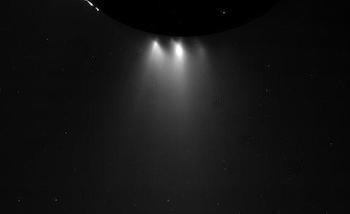
Our Cassini spacecraft has returned stunning images from its ultra-close flyby of Saturn's active moon Enceladus on Oct. 28. The photos are providing a quick look at Enceladus and its plume of icy vapor from the moon's geysers. But some of the most exciting science is yet to come, as scientists will be poring over data from Cassini's instruments to see what they detected as they flew through the plume.
4. A New Dimension in Lunar Landscapes

The Lunar Reconnaissance Orbiter maps the moon in boulder-by-boulder detail daily. The team that operates the spacecraft's most powerful camera has been releasing 3D versions of its high-resolution looks at the surface. You can see depth and detail in the pictures if you can get or make some red-blue glasses.
5. Pluto in Perspective

The New Horizons spacecraft has fired its engines again as it carries out a series of four maneuvers propelling it toward an encounter with the ancient Kuiper Belt object 2014 MU69, a billion miles farther from the sun than Pluto. Meanwhile, it continues the ongoing download of data from the Pluto encounter, including this recent stunner.
Make sure to follow us on Tumblr for your regular dose of space: http://nasa.tumblr.com
Solar System: Top 5 Things to Know This Week
Here are five things you need to know about our amazing solar system this week:
1. Perpetual Pluto-palooza

The New Horizons spacecraft continues its ongoing download of data and images from the July 14 flyby of the Pluto system. In the latest weekly release, the new images don’t disappoint, showing fine details in an exotic landscape. The New Horizons team has also described a wide range of findings about the dwarf planet’s system in its first science paper. Learn more HERE.
2. Encounter at Enceladus

The Cassini spacecraft has returned the closest images ever showing the north polar region of Saturn’s intriguing ice moon Enceladus. Scientists expected the area to be heavily cratered, but the new high-resolution Cassini images also show a landscape of stark contrasts, crisscrossed by a spidery network of gossamer-thin cracks that slice through the craters. The robotic spacecraft buzzed by the moon during the first of what will be three close encounters this year -- the last of the long mission. Next up: on Oct. 28 Cassini will deep dive right through Enceladus’ famous ice geyser plume! Learn more HERE.
3. We’re Giving You the Whole World, Every Day
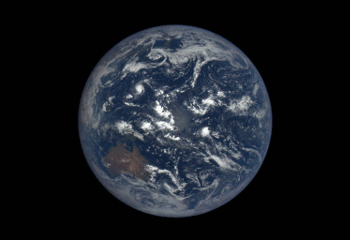
We have worked with NOAA to launch a new website that shows the full, sunlit side of the Earth on a daily basis. The images come from our camera a million miles away aboard the Deep Space Climate Observatory (DSCOVR). Each daily sequence of images shows the Earth as it rotates, revealing the entire planet over the course of a day. Take a look HERE.
4. Going Big at Jupiter

We have large, new maps of Jupiter, thanks to data from the Wide Field Camera 3 on our Hubble Space Telescope. The big images provide a detailed look at how the giant planet’s features change over time. In fact, the maps are just the first in a planned series of yearly portraits of the solar system’s four outer planets. The views come as we prepare for the Juno mission to arrive at Jupiter in little less than a year.
5. Catch a Falling Star

Meteors aren’t really falling stars, just dust and rock from deep space meeting a fiery end in Earth’s atmosphere -- but they’re a sight to behold if you can catch a glimpse. The Orionid meteors appear every year around this time, when Earth travels through an area of space littered with debris from Halley’s Comet. This year the peak will occur on the night of Wednesday, Oct. 21, into the morning of Thursday, Oct. 22. Find out how to watch HERE.
Make sure to follow us on Tumblr for your regular dose of space: http://nasa.tumblr.com
Solar System: Top 5 Things to Know This Week
1. A Ceres of Fortunate Events

Our Dawn mission continues its exploration at Ceres, and the team is working with the data coming back to Earth, looking for explanations for the tiny world’s strange features. Follow Dawn’s expedition HERE.
2. Icy Moon Rendezvous
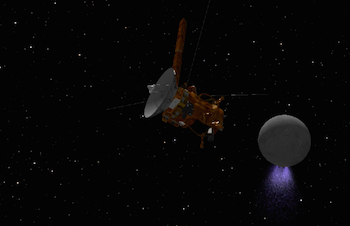
One of the most interesting places in the entire solar system is Saturn’s moon Enceladus, with its underground ocean and spectacular geyser plume. This month, the Cassini spacecraft will be buzzing close by Enceladus several times, the last such encounters of the mission. On October 14, Cassini will perform a targeted flyby at a distance of just 1,142 miles (1,838 kilometers) over the moon’s northern latitudes. Ride along with Cassini HERE.
3. Make Your Own Mars Walkabout
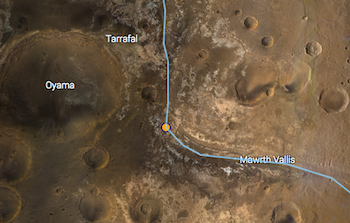
You can retrace Opportunity’s journey, see where the Curiosity rover is now, or even follow along with fictional astronaut Mark Watney from The Martian movie using the free online app MarsTrek. The app lets you zoom in on almost any part of the planet and see images obtained by our spacecraft, so you can plan your on Red Planet excursion. Take a hike HERE.
4. Elusive Features on Jupiter

New imagery from our Hubble Space Telescope is capturing details never before seen on Jupiter. High-resolution maps and spinning globes, rendered in the 4K Ultra HD format, reveal an elusive wave and changes to Jupiter’s Great Red Spot. Explore Jupiter HERE.
5. Mr. Blue Sky

Another week, another amazing picture from Pluto. The first color images of Pluto’s atmospheric hazes, returned by our New Horizons spacecraft last week, reveal that the hazes are blue. Who would have expected a blue sky in the Kuiper Belt? Most of the data collected during July’s Pluto flyby remains aboard the spacecraft, but the team publishes new batches of pictures and other findings on a weekly basis. Keep up with the latest HERE.
Make sure to follow us on Tumblr for your regular dose of space: http://nasa.tumblr.com